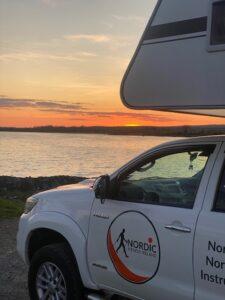
Permanently Closed
Gone Travelling!
We have now permently closed Nordic fitness Ireland.
We would like to take this opportunity to say a big thank you to everyone who has learned to Nordic walk with us and joined our walks over the past 7 years. We have thoroughly enjoyed meeting you all. We are now off to spend more time travelling and time with our family including our new grandson.


Where to Nordic Walk
We would recommend the following people for those wishing to learn to Nordic Walk.
Dublin: Kasia Tarnowska – 085 1849538 Classes in English & Polish
Clare: Alona Husachenko – 089 965 1964 Classes in English & Ukrainian
Follow Our Travels
If you want to keep up with our travels you can on our social media
Our new travel blog has lots of information including things about Nordic Walking. Check it out here: Life Is For Travelling